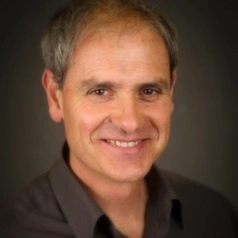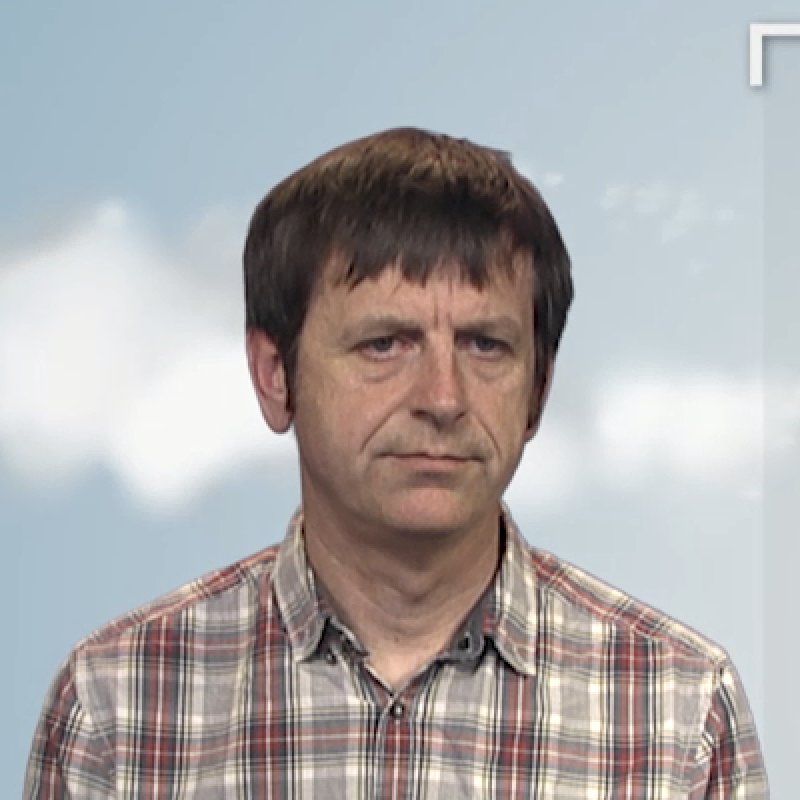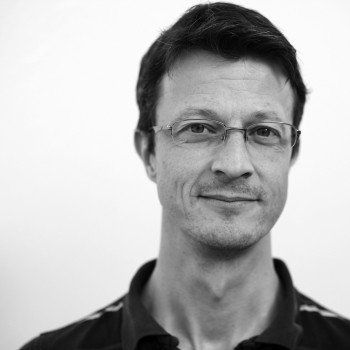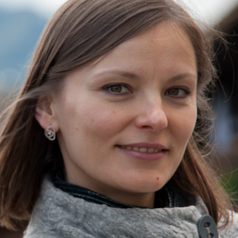ES
The Global Carbon Atlas is a community research effort intended to serve a broad user community. The Atlas team seeks feedback from users on ways to improve existing tools, create new ones, and involve new data contributors.aa
To provide feedback and get involved, please send email to contact@globalcarbonatlas.org
The Atlas was initially made possible by a philanthropic grant from the BNP Paribas Foundation through its Climate & Biodiversity Initiative to the Global Carbon Project. However, the Global Carbon Atlas requires the involvement and support of the broader user community for its long-term viability.
Follow the Global Carbon Atlas and other activities of the Global Carbon Project at:
Feedback and Involvement
The Global Carbon Atlas is a community research effort intended to serve a broad spectrum of users. The Atlas team seeks feedback on the existing tools and applications, ways to improve them and expand. To provide feedback, please contact the Atlas team via email (contact@globalcarbonatlas.org) or communicate issues of broader interest to the community through Facebook and Twitter. The Atlas, initially made possible by a philanthropic grant from the BNP Paribas Foundation through its Climate & Biodiversity initiative to the Global Carbon Project, requires the involvement and support of the broader user community for its long-term viability.


[http://www.globalcarbonproject.org/who_is_who/pep_canadell.htm].

[http://www.tyndall.ac.uk/people/corinne-le-quere]


folk.uio.no/glen



Fossil Fuel Emissions
Cite as: Friedlingstein et al. (2020).
Friedlingstein et al., 2020: The Global Carbon Budget 2020. Available at: Earth System Science Data.
Methods:
The 1959-2017 estimates for fossil fuels and industry are primarily from an update of Gilfillan et al. (2019).
We modify these data as follows:
- Where available (42 countries) the national estimates reported by Annex-1 parties to the UNFCCC (2020) during 1990-2018 are used instead of CDIAC data.
- Emissions for India during 2009-2019 are overwritten using data from Andrew (2020a).
- Emissions for Norway during 1973–1989 are overwritten using superior data derived from local sources.
- Cement emissions are updated from Andrew (2019).
- Emissions for Aruba before 1950 and for the countries of the former Soviet Union in 1942-43 are updated based on information in Andrew (2020b).
- Global total emissions are calculated as the sum of all countries’ emissions plus emissions from international bunker fuels.
- The 2018 and 2019 estimates (or just 2019 where UNFCCC data are available) are preliminary and based on energy statistics published by BP (BP, 2020).
Cement emissions
Cite as Andrew, R., 2019. Global CO2 emissions from cement production, 1928–2018. Earth System Science Data, 11(4), 1675-1710, DOI: 10.5194/essd-11-1675-2019. Available at: https://www.earth-syst-sci-data.net/11/1675/2019/
Consumption-based Fossil Fuel Emissions
Cite as: Updated from Peters et al. (2011) and Peters et al. (2012)
Peters, GP, Minx, JC, Weber L, and Edenhofer, O. 2011. Growth in emission transfers via international trade from 1990 to 2008. Proceedings of the National Academy of Sciences USA. DOI:10.1073/pnas.1006388108. Available at: http://www.pnas.org/content/108/21/8903
Peters, GP, Davis, SJ and Andrew, R 2012. A synthesis of carbon in international trade. Biogeosciences, 9, 3247-3276. DOI: 10.5194/bg-9-3247-2012. Available at: http://www.biogeosciences.net/9/3247/2012/bg-9-3247-2012.html
The use of data is conditional on citing the original data sources.
Land-Use Change Emissions
Cite as: Updated from Houghton and Nassikas (2017), Hansis et al. (2015), Gasser et al. (2020).
Houghton, R. A. and Nassikas, A. A. (2017), Global and regional fluxes of carbon from land use and land cover change 1850-2015, Global Biogeochemical Cycles, 31(3), 456–472, DOI:10.1002/2016gb005546 Available at: https://agupubs.onlinelibrary.wiley.com/doi/full/10.1002/2016GB005546
Hansis, E., Davis, S.J., Pongratz, J., 2015. Relevance of methodological choices for accounting of land use change carbon fluxes. Global Biogeochemical Cycles, 2014GB004997. DOI: 10.1002/2014GB004997. Available at: https://agupubs.onlinelibrary.wiley.com/doi/full/10.1002/2014GB004997
Gasser, T., Crepin, L., Quilcaille, Y., Houghton, R. A., Ciais, P. and Obersteiner, M., 2020. Historical CO2 emissions from land use and land cover change and their uncertainty, Biogeosciences 17, 4075–4101, DOI: 10.5194/bg-17-4075-2020. Available at: https://bg.copernicus.org/articles/17/4075/2020/
Gross Domestic Product
GDP: IEA/OECD 2019. CO2 Emissions from Fuel Combustion Highlights. Paris. Available at: https://webstore.iea.org/co2-emissions-from-fuel-combustion-2019-highlights
Population
UN, 2019. World Population Prospects: The 2019 Revision. United Nations Population Division. Available at: https://esa.un.org/unpd/wpp/
Terms of use
The use of data is conditional on citing the original data sources. Full details on how to cite the data are given above and in the corresponding web links.
The Global Carbon Project facilitates access to data to encourage its use and promote a good understanding of the carbon cycle. Respecting original data sources is key to help secure the support to enhance, maintain and update valuable data.
Atmospheric inversions
General description: Atmospheric CO2 inversions estimate surface-to-atmosphere net carbon fluxes by utilizing atmospheric CO2 concentration measurements and an atmospheric transport model (see more details). The contributing inversions are recent state of the art systems that have been used for the RECCAP synthesis and compared in Peylin et al., Biogeosciences (2013). The inversion results have been provided by individual scientists, as credited, who have made them available and encourage their use.
The original data have been reformatted onto a 1×1 degree grid and further processed to correct for differences in fossil fuel emissions between inversions. Only the natural land and ocean fluxes are displayed under this portal. If you plan to use any of these results, you need to contact each modeling group. Note that regional totals and reformatted 3-D fluxes can be accessed under the “Transcom” web site (http://transcom.lsce.ipsl.fr/) after contacting Philippe Peylin (Peylin@lsce.ipsl.fr).
The use of data is conditional on citing the original data sources. Full details on how to cite the data are given for each inversion in the references below and in the corresponding web links. The Global Carbon Project facilitates access to data to encourage its use and promote a good understanding of the carbon cycle. Respecting original data sources is key to help secure the support to enhance, maintain and update valuable data.
MACC-II:
Contacts: Frederic Chevallier (frederic.chevallier@lsce.ipsl.fr)
Description: MACC-II corresponds to version 11.2 of the CO2 inversion product from the Monitoring Atmospheric Composition and Climate – Interim Implementation (MACC-II) service (http://www.gmes-atmosphere.eu/). It is based on a variational formulation. Fluxes are solved at the resolution of the transport model (LMDz-v4 : 2.5° x 3.75°) and a 8-day daytime/nighttime resolution. Prior land and ocean fluxes come from the ORCHIDEE land surface model climatology and Takahashi et al. (2009), respectively. Raw atmospheric CO2 concentrations from 134 observing sites are used.
References:
Chevallier, F., et al.: CO2 surface fluxes at grid point scale estimated from a global 21 year reanalysis of atmospheric measurements, J. Geophys. Res., 115, D21307, doi:10.1029/2010JD013887, 2010.
Data access: http://www.gmes-atmosphere.eu/d/services/gac/delayed/
JENA-MPI:
Contacts: Christian Roedenbeck (Christian.Roedenbeck@bgc-jena.mpg.de)
Description: The Jena inversion has been designed to estimate interannual variations of land and ocean fluxes, based on raw CO2 concentration data from 50 observing sites. It uses a variational approach with the TM3 transport model (4° x 5°, using interannually-varying winds). Fluxes are optimized at the spatial resolution of the transport model and at roughly weekly to interannual time scales. Prior land fluxes come from fossil fuel emissions and a modelled mean biosphere pattern, and ocean fluxes from an inverse estimate based on ocean carbon data (Mikaloff-Fletcher et al. 2006).
References:
C. Rödenbeck et al.: CO2 flux history 1982-2001 inferred from atmospheric data using a global inversion of atmospheric transport, Atmos. Chem. Phys. 3, 1919-1964 (2003) ; Updated version s96_v3.51
Data access: Results can be downloaded from “http://www.bgc-jena.mpg.de/~christian.roedenbeck/download-CO2/”
LSCE-ana:
Contacts: Philippe Peylin (Peylin@lsce.ipsl.fr)
Description: LSCE-ana inversion is based on a Bayesian synthesis method described in Peylin et al. (2005) and corresponds to the results described in Piao et al., 2009. Fluxes are optimized at the resolution of the transport model (LMDz-v3 : 2.5° x 3.75°) on a monthly base. Prior land and ocean fluxes come from ORCHIDEE land surface model climatology and Takahashi et al. (2002), respectively. Monthly mean CO2 concentrations from 74 observing sites are used.
References:
Peylin, P., et al.: Daily CO2 flux estimates over Europe from continuous atmospheric mea- surements: 1, inverse methodology, Atmos. Chem. Phys., 5, 3173–3186, doi:10.5194/acp-5-3173-2005, 2005.
Piao, S. L., Fang, J. Y., Ciais, P. Peylin, P., Huang, Y., Sitch, S., and Wang, T.: The carbon balance of terrestrial ecosystems in China, Nature, 458, 1009–1014, 2009.
Data access: contact Philippe Peylin
CCAM:
Contacts: Rachel Law (rachel.law@csiro.au)
Description: CCAM inversion uses a Bayesian synthesis method, described in Rayner et al. 2008. It is based on CCAM transport model but with not interannual-varying winds. Fluxes are solved for 94-land and 52-ocean regions on a monthly base. Prior land and ocean fluxes come from CASA land surface model climatology and Takahashi et al. (1999), respectively. Monthly mean observations from 73 atmospheric CO2 records and 7 d13C records are used.
References:
Rayner, P. J., Law, et al.: Interannual variability of the global carbon cycle (1992–2005) inferred by inversion of atmospheric CO2 and d 13 CO2 measurements, Global Biogeochem. Cy., 22, GB3008, doi:10.1029/2007GB003068, 2008.
Data access: contact Rachel Law
MATCH:
Contacts: Peter Rayner (prayner@unimelb.edu.au)
Description: MATCH inversion uses a Bayesian synthesis method, described in Rayner et al. 2008. It is based on MATCH transport model but with not interannual-varying winds. Fluxes are optimized for 67-land and 49-ocean regions on a monthly base. Prior land and ocean fluxes come from CASA land surface model climatology and Takahashi et al. (1999), respectively. Monthly mean observations from 73 atmospheric CO2 records and 7 d13C records are used.
References:
Rayner, P. J., Law, et al.: Interannual variability of the global carbon cycle (1992–2005) inferred by inversion of atmospheric CO2 and d 13 CO2 measurements, Global Biogeochem. Cy., 22, GB3008, doi:10.1029/2007GB003068, 2008.
Data access: contact Peter Rayner
CTE2013:
Contacts: Wouter Peters (wouter.peters@wur.nl)
Description: CTE2013 inversion corresponds to the CarbonTracker system, described in Peters et al. (2007) with a specific zoom over Europe and North America. It is based on TM5 transport model with two nested grids (1°x1° resolution over Europe/North America and 3° x 2° elsewhere) and with interannually-varying winds. It uses an ensemble Kalman filter to optimized weekly fluxes over 138-land and 30-ocean regions. Prior land and ocean fluxes come CASA biosphere model (including interannual flux variations) and from the ocean inversions reported in Jacobson et al. (2007), respectively. Raw CO2 concentrations from 117 observing sites are used.
References:
Peters et al. An atmospheric perspective on North American carbon dioxide ex- change: CarbonTracker, P. Natl. Acad. Sci. USA, 104, 18925– 18930, doi:10.1073/pnas.0708986104, 2007.
Jacobson, A. R., et al.: A joint atmosphere-ocean inversion for surface fluxes of carbon dioxide: I. Methods and global-scale fluxes, Global Biogeochem. Cy., 21, GB1019, doi:10.1029/2005GB002556, 2007.
Data access: contact Wouter Peters and access via http://www.carbontracker.eu/.
RIGC:
Contacts: Prabir Patra (prabir@jamstec.go.jp)
Description: RIGC inversion results are based on the TransCom Level 3 Bayesian synthesis method, using the NEIS/FRCGC transport model with interannually-varying winds. They are described in details in Patra et al. (2005). Fluxes are optimized for 42-land and 22-ocean regions on a monthly base. Prior land and ocean fluxes come from CASA biosphere model (climatology) and Takahashi et al. (1999), respectively. Monthly mean CO2 concentrations from 74 observing sites are used.
References:
Patra, P. K., et al.: Role of biomass burning and climate anomalies for land-atmosphere carbon fluxes based on inverse modeling of atmospheric CO2, Global Biogeochem. Cy., 19, GB3005, doi:10.1029/2004GB002258, 2005.
Data access: contact Prabir Patra
TRCOM-mean:
Contacts: Kevin Gurney (kevin.gurney@asu.edu)
Description: The TRCOM-mean results are based on the TransCom 3 Level 2 analysis found in Gurney et al. (2008), based on a Bayesian synthesis method. The individual posterior flux results from 11 transport models (using no interannually-varying winds) are averaged to generate the multi-model mean. Fluxes are optimized for 11-land and 11-ocean regions (sub-continental size) on a monthly base. Prior land and ocean fluxes come from CASA biosphere model (climatology) and Takahashi et al. (1999), respectively. Monthly mean CO2 concentrations from 103 observing sites are used.
References:
Gurney, K. R., et al., Interannual variations in continental-scale net carbon exchange and sensitivity to observing networks estimated from atmospheric CO2 in- versions for the period 1980 to 2005, Global Biogeochem. Cy., 22, GB3025, doi:10.1029/2007GB003082, 2008.
Data access: contact Kevin Gurney
NICAM-TM:
Contacts: Yosuke Niwa (yniwa@mri-jma.go.jp)
Description: NICAM inversion is based upon the TransCom 3 Bayesian synthesis method, further described in Niwa et al. (2012). It relies on the NICAM-TM transport model with interannually-varying winds. Fluxes are optimized for 29-land and 11-ocean regions on a monthly base. Prior land and ocean fluxes are taken from the CASA biosphere model (climatology) and Takahashi et al. (2009), respectively. Monthly mean CO2 concentrations from 59 surface sites and from 12 aircraft points of CONTRAIL are used.
References:
Niwa, Y., et al.: Imposing strong constraints on tropical terrestrial CO2 fluxes using passenger aircraft based measurements, J. Geophys. Res., 117, D11303, doi:10.1029/2012JD017474, 2012.
Data access: contact Yosuke Niwa
JMA:
Contacts: Takashi Maki (tmaki@mri-jma.go.jp)
Description: JMA inversion is based upon the TransCom 3 Bayesian synthesis method, further described in Maki et al. (2010). It relies on the JMA-CDTM transport model with interannually-varying winds. Fluxes are optimized for 11-land and 11-ocean regions on a monthly base. Prior land and ocean fluxes are taken from the CASA biosphere model (climatology) and Takahashi et al. (2002), respectively. Monthly mean CO2 concentrations from 146 sites are used.
References:
Maki et al. New technique to analyse global distributions of CO2 concentra- tions and fluxes from non-processed observational data, Tellus B, 62, 797–809, doi: 10.1111/j.1600-0889.2010.00488.x, 2010.
Data access: contact Takashi Maki
Land models
General description: A terrestrial carbon model encapsulates natural and human induced processes through which land ecosystems absorb and emit CO2, and carbon is stored by plants and soils. There is a large variety of such models, going from simple empirical to highly complex models describing water, energy and sometimes nutrients cycling, as well as carbon dynamics. The terrestrial carbon model results shown here are so called Dynamic Global Vegetation Models that were used in the TRENDY project (Trends in net land atmosphere carbon exchanges) coordinated by Stephen Sitch (S.A.Sitch@exeter.ac.uk). The model simulations that are reported here were performed with observed cropland and pasture distributions, with changing climate, and with changing atmospheric CO2 concentrations (S2 scenario). Climate forcing corresponds to a merge between CRU data and NCEPv4 reanalysis, over the period 1901-2010. These data should be considered provisional, and subject to change.
For data access and data policy please refer to (http://dgvm.ceh.ac.uk/node/9).
The use of data is conditional on citing the original data sources. Full details on how to cite the data are given for each land model in the references below and in the corresponding web links. The Global Carbon Project facilitates access to data to encourage its use and promote a good understanding of the carbon cycle. Respecting original data sources is key to help secure the support to enhance, maintain and update valuable data.
LPJ:
Contacts: Benjamin Poulter (Benjamin.poulter@lsce.ipsl.fr)
Description: LPJ computes the energy, water and carbon balances at daily time step; see reference.
References:
Sitch S, et al. : Evaluation of ecosystem dynamics, plant geography and terrestrial carbon cycling in the LPJ dynamic vegetation model. Global Change Biology, 9, 161-185, 2003.
Data access: contact Benjamin Poulter
LPJ_GUESS:
Contacts: Anders Ahlström (anders.ahlstrom@nateko.lu.se) ; Benjamin Smith (ben.smith.lu@gmail.com)
Description: LPJ_GUESS computes the energy, water and carbon balances at daily time step; see reference.
References:
Smith, B, Prentice IC Sykes, MT : Representation of vegetation dynamics in the modelling of terrestrial ecosystems: comparing two contrasting approaches within European climate space, Global Ecology and Biogeography, 10(6), 621-637, 2001.
Data access: contact Anders Ahlström
ORCHIDEE:
Contacts: Nicolas Viovy (Nicolas.viovy@lsce.ipsl.fr)
Description: ORCHIDEE computes the energy, water and carbon balances at half-hourly time step; see reference.
References:
Krinner G, et al. :A dynamic global vegetation model for studies of the coupled atmosphere-biosphere system. Global Biogeochemical Cycles, 19, GB1015, doi:10.1029/2003GB002199, 2005.
Data access: contact Nicolas Viovy
CLM4CN:
Contacts: Sam Lewis (slevis@ucar.edu)
Description: CLM4CN computes the energy, water, carbon and nitrogen balances at half-hourly time step; see references.
References:
Bonan GB and Levis S : Quantifying carbon-nitrogen feedbacks in the Community Land Model (CLM4). Geophysical Research Letters, 37, L07401, doi:10.1029/2010GL042430, 2010.
Lawrence DM, et al. : Parameterization improvements and functional and structural advances in version 4 of the Community Land Model. Journal of Advances in Modeling Earth Systems, 3, doi: 10.1029/2011MS000045, 2011.
Data access: contact Sam Lewis
TRIFFID:
Contacts: Stephen Sitch (S.A.Sitch@exeter.ac.uk)
Description: TRIFFID computes the energy, water and carbon balances at half-hourly time step; see references.
References:
Cox PM : Description of the “TRIFFID” dynamic global vegetation model. Hadley Centre Technical Note 24, 2001.
Clark, D.B., et al. The Joint UK Land Environment Simulator (JULES), Model description, Part 2: Carbon fluxes and vegetation, Geosci. Model Dev. Discuss., 4, 641- 688, 2011.
Data access: contact Stephen Sitch
VEGAS:
Contacts: Ning Zen (zeng@umd.edu) ; Fang Zhao (fzhao@atmos.umd.edu)
Description: VEGAS computes the energy, water and carbon cycles at daily time step; see reference.
References:
Zeng, N. : Glacial-interglacial atmospheric CO2 change – The glacial burial hypothesis, Advances in Atmospheric Sciences, 20(5), 677-673, 2003.
Zeng, N., A. Mariotti, and P. Wetzel : Terrestrial mechanisms of interannual CO2 variability, Global Biogeochemical Cycles, 2005.
Data access: contact Ning Zen and access from http://www.atmos.umd.edu/~cabo/
SDGVM:
Contacts: Mark Lomas (m.r.lomas@sheffield.ac.uk)
Description: SDGVM computes the energy, water and carbon cycles at daily time step; see reference.
References:
Woodward FI, Smith TM, Emanuel WR : A global land primary productivity and phytogeography model. Global Biogeochemical Cycles, 9, 471-490, 1995.
Woodward FI, Lomas MR : Vegetation-dynamics- simulating responses to climate change. Biological Reviews, 79, 643-670, 2004.
Data access: contact Mark Lomas
Hyland:
Contacts: Peter Levy (plevy@ceh.ac.uk)
Description: Hyland computes the energy, water and carbon cycles at daily time step; see reference.
References:
Levy, P. E., Cannell, M. G. R., & Friend, A. D. (2004). Modelling the impact of future changes in climate, CO2 concentration and land use on natural ecosystems and the terrestrial carbon sink. Global Environmental Change, 14(1), 21-30. https://doi.org/10.1016/j.gloenvcha.2003.10.005
Levy, P. E., Friend, A. D., White, A., & Cannell, M. G. R. (2004). The influence of land use change on global-scale fluxes of carbon from terrestrial ecosystems. Climatic Change, 67(2-3), 185-209.
Data access: contact Peter Levy
Ocean models
General description: The contributing models correspond to the ocean biogeochemistry models that were used in the RECCAP synthesis (see http://www.globalcarbonproject.org/reccap/products.htm). All simulations use a prognostic biogeochemistry model embedded in a physical ocean circulation model that is run online. The surface forcing for the dynamical models consists of using atmospheric flux fields derived from a combination of reanalysis and remotely sensed products. Surface buoyancy forcing is accomplished through the use of bulk formulas or other 20 methods for heat and freshwater fluxes, with a restoring of SSS towards climatological values being characteristic of most of the models. The models considered here are coarse resolution models that are neither eddy permitting nor eddy resolving.
The model results are compared in “Ishii, M., et al. (2013): Air-sea CO2 flux in the Pacific Ocean for the period 1990–2009, Biogeosciences, 10, 12155-12216, doi:10.5194/bgd-10-12155-2013, 2013”.
The use of data is conditional on citing the original data sources. Full details on how to cite the data are given for each land model in the references below and in the corresponding web links. The Global Carbon Project facilitates access to data to encourage its use and promote a good understanding of the carbon cycle. Respecting original data sources is key to help secure the support to enhance, maintain and update valuable data.
WHOI:
Contacts: Scott Doney (sdoney@whoi.edu)
Description: see references
References :
Doney, S. C., et al.: Mechanisms governing interannual variability in upper-ocean inorganic carbon system and air–sea CO2 fluxes: Physical climate and atmospheric dust, Deep-Sea Research Part Ii-Topical Studies in Oceanography, 56, 640-655, 2009
Doney, S. C., et al.: Skill metrics for confronting global upper ocean ecosystem-biogeochemistry models against field and remote sensing data, Journal of Marine Systems, 76, 95-112, http://dx.doi.org/10.1016/j.jmarsys.2008.05.015, 2009.
Data access: contact Scott Doney
NEMO-PISCES:
Contacts: Laurent Bopp (Laurent.bopp@lsce.ipsl.fr)
Description: see reference
References :
Aumont, O., and Bopp, L.: Globalizing results from ocean in situ iron fertilization studies, Global Biogeochemical Cycles, 20, GB2017, 10.1029/2005GB002591, 2006.
Data access: contact Laurent Bopp
MICOM-HAMOCC:
Contacts: Jörg Schwinger (jorg.schwinger@gfi.uib.no)
Description: see reference
References:
Assmann, K. M., et al.: An isopycnic ocean carbon cycle model, Geoscientific Model Development, 3, 143-167, 2010.
Data access: contact Jörg Schwinger
MPI-MET:
Contacts: Joachim Segschneider (Joachim.segschneider@mpimet.mpg.de)
Description: see reference
References:
Ilyina, T., et al.: The global ocean biogeochemistry model HAMOCC: Model architecture and performance as component of the MPI-Earth System Model in different CMIP5 experimental realizations, Journal of Advances in Modeling Earth Systems, doi: 10.1002/jame.20017, 2013.
Data access: contact Joachim Segschneider
NEMO-PlankTOM5:
Contacts: Corinne Le Quéré (c.lequere@uea.ac.uk) ; Erik T. Buitenhuis (e.buitenhuis@uea.ac.uk)
Description: see http://lgmacweb.env.uea.ac.uk/green_ocean/model/description.shtml?u11r1
References:
Buitenhuis, E. T., et al.: Biogeochemical fluxes through microzooplankton, Global Biogeochemical Cycles, GB4015, 10.1029/2009GB003601, 2010.
Data access: contact Corinne Le Quéré
CSIRO-BOGCM:
Contacts: Andrew Lenton (Andrew.Lenton@csiro.au)
Description: see references
References:
Lenton, A. and R.J. Matear (2007). Role of the Southern Annular Mode (SAM) in Southern Ocean CO2 uptake. Global Biogeochem. Cycles, 21, GB2016.
Matear, R. J. and A. Lenton (2008). Impact of Historical Climate Change on the Southern Ocean Carbon Cycle. J. Climate, 21, 5820–5834. doi: http://dx.doi.org/10.1175/2008JCLI2194.1
Data access: contact Andrew Lenton
Disclaimer:
This material is general in nature. It is made available on the understanding that the Global Carbon Project (GCP) is not thereby engaged in rendering professional advice. Before relying on the material in any important matter, users should carefully evaluate its accuracy, currency, completeness and relevance for their purposes, and should obtain any appropriate professional advice relevant to their particular circumstances.
In some cases the material may incorporate or summarise views, guidelines or recommendations of third parties. Such material is assembled in good faith, but does not necessarily reflect the considered views of the Global Carbon Project (GCP), or indicate a commitment to a particular course of action. Links to other websites are inserted for convenience and do not constitute endorsement of material at those sites, or any associated organisation, product or service.
The Editorial Board is made up of experts in the subject area that the Global Carbon Atlas including data providers, research user community, broader user community (NGOs, civil society, industry, higher education), and science communicators. They provide advice on content and appropriateness, review content and links to user community, and advice on communication content and strategies for the multiple audiences.
|
Laurent Bopp |
Laboratoire des Sciences du Climat et de l’Environnement (IPSL/LSCE; CEA-CNRS-UVSQ), France
|
|
Owen Gaffney |
Stockholm Resilience Centre / Future Earth, Sweden
|
|
Jean-Jacques Goron |
Foundation BNP Paribas, France
|
|
Jay Sterling Gregg |
Technical University of Denmark, Denmark |
|
Kevin Gurney |
Arizona State University, USA |
|
Rob Jackson |
Duke University, USA |
|
Florian Kraxner |
International Institute for Applied Systems Analysis (IIASA), Austria |
|
Rik Leemans |
Wageningen University, The Netherlands |
|
Jason Lowe |
Met Office Hadley Centre, University of Reading, UK |
|
Asher Minns |
Tyndall Centre for Climate Change Research, University of East Anglia, UK |
|
James Orr |
Laboratoire des Sciences du Climat et de l’Environnement (LSCE), France |
|
Chris Sabine |
National Oceanic and Atmospheric Administration (NOAA), USA |
|
Anatoly Schvidenko |
International Institute for Applied Systems Analysis (IIASA), Austria |
|
Gyami Shrestha |
U.S. Carbon Cycle Science Program, U.S. Global Change Research Program National Coordination Office, USA |
|
Sylvain Taboni |
Foundation BNP Paribas, Climate Initiative, France |
|
Maciej Telszewski |
International Ocean Carbon Coordination Project (IOCCP), Poland |
|
Denise Young |
Future Earth, International Council for Science (ICSU), France |
|
Yoshiki Yamagata |
National Institute for Environmental Studies (NIES), Japan |
The Global Carbon Atlas project is supported by a grant to the Global Carbon Project by the BNP Paribas Foundation through its Climate & Biodiversity Initiative which aims at supporting research on climate change.
Patrick Brockmann, Pascal Evano, Vanessa Maigne, Anna Peregon, Philippe Peylin and Philippe Ciais, work at LSCE, a joint research unit of the Commisariat à l’Energie Atomique (CEA), the Centre National de la Recherche Scientifique (CNRS), and the University of Versailles St Quentin en Yvelines (UVSQ). Philippe Ciais, co-chair of the Global Carbon Project from 2007 to 2014, is the coordinator of the BNP-Paribas project that enabled the creation of the Global Carbon Atlas, and the project is managed by UVSQ. The PhD grant of P. Evano who co-developed graphic tools for the Global Carbon Atlas is funded by EU FP7 project GEOVIQUA. The Global Carbon Atlas developers received support from the Institut Pierre Simon Laplace (IPSL) for the server and archive of model output.
Pep Canadell and the Canberra International Project Office of the Global Carbon Project is supported by the Australian Climate Change Science Program sponsored by the Commonwealth Science and Industrial Research Organization, the Bureau of Meteorology, and the Department of the Environment.
Corinne Le Quéré and Róisín Moriarty are supported by the Tyndall Centre for Climate Change Research at the University of East Anglia, Norwich, UK. Their work was funded by the UK Natural Environment Research Council (NERC) though their International Opportunities Fund (project NE/103002X/1) and the European Union FP7 project GEOCarbon (283080).
R. Andres is sponsored by U.S. Department of Energy, Office of Science, Biological and Environmental Research (BER) programs and performed at Oak Ridge National Laboratory (ORNL) under U.S. Department of Energy contract DE-AC05-00OR22725.
WeDoData
WEDODATA is a data visualization agency based in Paris specialized in print infographics, web and mobile applications with a strong data input. At WEDODATA, journalists, graphic designers and web developers work as a team to deliver the most creative and accurate visualizations to their clients such as OECD, FranceTV, Radio France or French WIPO branch. WEDODATA assisted the Carbon Atlas team in the design (conception and development) of the Outreach and Emissions applications.
-
Karen Bastien : Director
-
Brice Terdjman : Director
- François Prosper : Director
- Benjamin Grillet: Developer
-
Anthony Vessière : Developer
Website : http://wedodata.fr/

